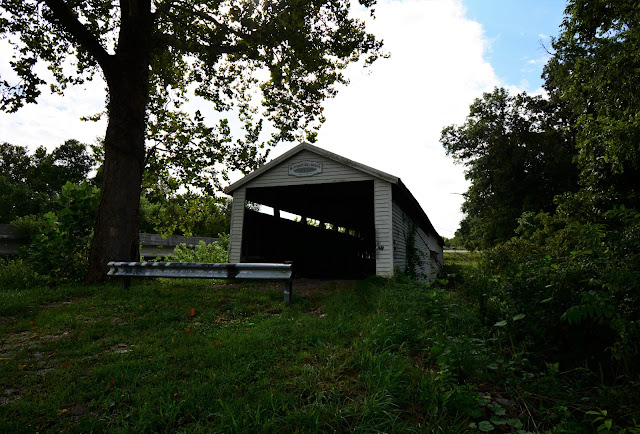TALLADEGA CREEK
TALLADEGA COUNTY
BUILT - 1861
Length - 105' .... In Kymulga Mill Park NE of Childersburg. AL76 NE 1.8 miles from jct with US231 in Childersburg, N. on CR180 3.8 miles to the bridge on the W. side of the road. The Kymulga bridge is a wood & metal combination. The covered bridge once provided access to the Old Georgia Road or the McIntosh Road, a Native American trade route which was used by settlers and frontiersmen who ventured the area. Restored in 1974. Posted to the National Register of Historic Places on October 29, 1976. Closed to motor traffic. Truss Type - Covered Howe Through Truss.
World Guide to Covered Bridge Number - 01-61-01
GPS +33.33399, -86.29991
Kymulga Mill
Kymulga Mill is a working gristmill built in 1864 by South Carolina contractor G.E. Morris for Confederate Army Major George H. Forney, who was later promoted to lieutenant colonel. Forney died at the Battle of the Wilderness in Virginia before construction was completed, but his wife allowed Morris to finish it. Union Army soldiers burned most of the gristmills throughout the area during the Civil War, but Kymulga Mill was missed. The mill's four-story structure is supported by huge wooden beams, running the length and width of the building. All the timber was gathered on site, cut at the mill and assembled with wooden pegs. Three water powered turbines ran the four-story mill, including lights, grain elevator, and millstones used for grinding grain; two of its five sets are French Buhrs, thought to be the hardest rock in the world. The French Buhrs were brought in by oxen and sled, all the way from the port at Mobile. The Kymulga Mill continues to operate to this day, though under electricity, still making corn meal with its huge millstones. Posted to the National Register of Historic Places on October 29, 1976.































































